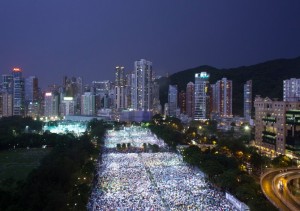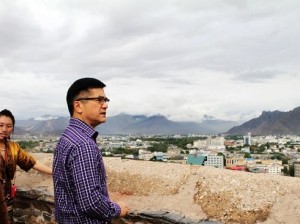The fourth of June this year marked the 24th anniversary of the 1989 Tiananmen Square massacre in Beijing. Hundreds of pro-democracy protestors, mainly students, were killed in this crackdown by hardline leaders who ordered the military to enforce martial law in the country’s capital.
Twenty four years later it is apparent that nothing much has changed. People in China still struggle with limited human rights. Their 1989 protest – one of the major protests of the 20th century – was declared a “Counter revolutionary riot” by the Chinese government, which has since prohibited all discussion or commemoration of the event.
Beijing-based human rights activist Hu Jai is currently under restriction following his online appeal for people to wear black T-shirts on June 4, or to light a candle in their homes on the evening of June 3, to remember the event.
As protest in mainland China is still off-limit, in recent years tens of thousands of people have been gathering in Hong Kong’s Victoria Park to mark the anniversary of the Tiananmen Square massacre. Hong Kong, returned to China by the British in 1997, operates under a separate political system that promises freedom of speech and other western-style civil liberties.
“More and more people would like to know the truth about the incident, which makes the authorities more nervous” said Ai Xiaoming, an academic from Guangzhon, a city about 75 miles north of Hong Kong. “Although it’s difficult for people to get access to publications in China, they are able to get information through channels such as social media. People face suppression, detention, arrest and even conviction, but the information can’t be completely blocked.”
The Tiananmen protest was triggered in April 1989 by the death of former Communist party general Secretary, Hu Yaobang,a liberal reformer, who was deposed after losing a power struggle with hardliners over the direction of political and economic reform. University students marched to gather in Tiananmen Square to mourn Hu and to voice grievances against inflation, limited career prospects and corruption of the party elite. They also called for government accountability, freedom of press, freedom of speech and restoration of workers’ control over industry.
A student-led hunger strike galvanised support for the demonstration and the protest spread to 400 cities. Party authorities declared martial law and mobilised 30,000 troops. The result was widespread arrests of protestors and their supporters, expelled foreign journalists and strictly controlled coverage of the events in the domestic press. The Chinese government was condemned internationally for the use of force against the protestors, and western governments imposed economic sanctions and arms embargoes.
The Chinese response by Hong Lei, Foreign Ministry spokesman, has been: “We hope the relevant country will discard prejudice, respect facts and not use the issue to interfere in China’s internal affairs or affect the growth of China-US relations”.





 Print
Print Email
Email